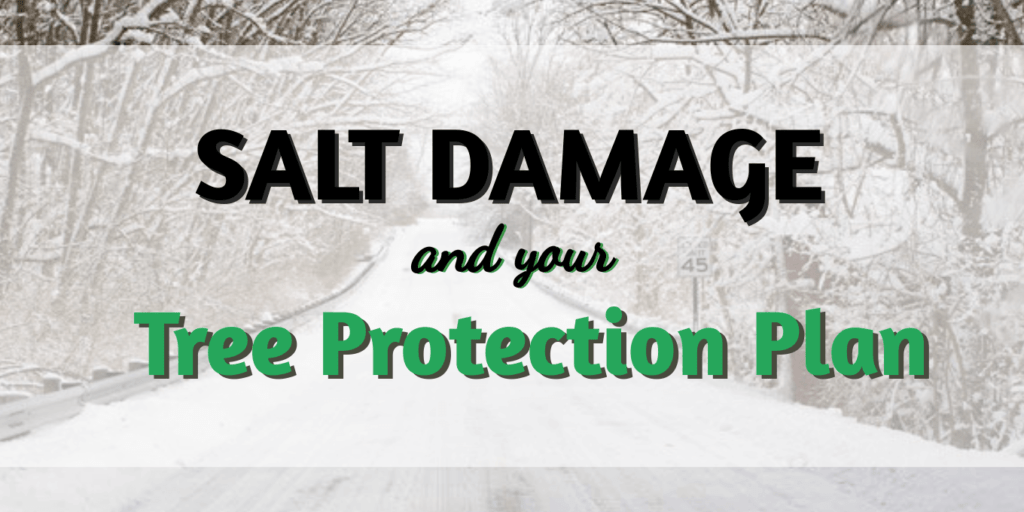Canada uses at least $7 million tonnes of salt per year on its roads, and dealing with the damage it does to our cars, homes, and clothing is a regular part of winter here in the Great White North. But this road salt has a huge impact on the environment, too, and while you picture it getting into waterways, you might forget that this salt affects your property’s environment, too. Preventing salt damage should be a priority in order to protect more trees on your property.
While the road salt typically used is all-natural sodium chloride, it being all over the roads isn’t what nature had in mind. While it might be safe for you, it can kill your plants, and if it’s bad enough, even the heartiest of your trees. Here’s how this happens, how you can prevent it and why you should add it to your tree protection plan!
How Does Salt Harm Trees?
You’re probably also familiar with a term “salting the earth.” It’s an ancient symbol performed after the destruction of a city, where the conqueror would curse his enemy from ever living on this land again. It comes from their observation that salt prevents plant growth, and if you’re not careful, you might experience this yourself when the city trucks hit the road. Salt accumulation in the soil that comes from spraying, vapour stirred up from traffic, and meltwater can impede osmosis, preventing the roots from taking in water.
When salt accumulates in the soil, it will break down into its most elemental states: sodium and chlorine. If they get pulled into the tree through the roots, these elements can be harmful in spring. The chlorine is taken in by the tree, getting into the sap and killing the buds before making its way into the leaves, causing them to scorch and die. Sodium blocks two key nutrients – potassium and magnesium – necessary for the production of chlorophyll. If the case is bad, the tree might not be able to resist hardships like drought.
You won’t notice the effects in winter, but they’ll make themselves known come spring: coniferous trees will have the needles turn brown and die, and deciduous trees will grow clusters of twigs at the end of branches (sometimes referred to as “witches’ brooms”) due to their buds dying. Deciduous trees will also lose their growth, the leaves will turn yellow and brown, and be unable to open their buds.
Salt Damage Prevention Tips For Your Tree Protection Plan
When you have to de-ice your personal driveway, steps, or walkways, avoid using salts – sand works well to give some grip. When salt is unavoidable, use it sparingly and early before freezes. Naturally, try and keep it away from plants when dispersing it. Flush your soil and walkways in early spring to diminish the effects of any salt that may have gone further than you anticipated. These are the most important tips to note in your tree protection plan.
If you’re planting new bushes, shrubs, or trees, only put them near roads and sidewalks if they’re very tolerant to salt. Some good species include ash, birch, red pine, red oak, and poplar. Trees that shouldn’t be planted near roads include basswood, eastern hemlock, spruce, sugar maple, and white pine. If you have salt-intolerant species in inconvenient locations, set up barriers like burlap or plastic fencing during the winter.
Usually, a healthy tree can overcome salt as spring moves to summer, unless it’s very stressed. So the best preventative measure is keeping those trees healthy! With new tree protection bi-laws recently approved in London, tree preservation is more important than ever. If you’re a real self-starter we have lots of articles on tree protection like how to recognize a diseased tree or harmful tree bugs. And of course, you can call us today if your trees are in need of a little TLC or if you want help setting up a tree protection plan.

